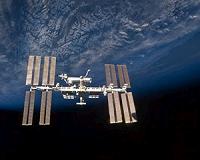 |
Houston TX (SPX) Apr 13, 2011 The International Space Station is a unique laboratory, due to its microgravity environment, but it still shares similarities with Earth-bound research facilities. Both perform experiments as part of their research goals, yielding various samples from which they collect data towards results. These samples can require preservation in refrigerators and freezers. A recent malfunction of a Minus Eighty-Degree Laboratory Freezer for ISS, or MELFI, on the space station, however, brought to light one of the main differences between this orbiting lab and its Earthly counterparts - refrigeration repair companies do not make house calls in space. The malfunction of the MELFI flight unit two has been an ongoing challenge for the space station. In October of 2009, and twice in December 2010, the unit experienced an automatic shutdown due to difficulties with the Electronics Units or EUs. The nonfunctioning EUs all returned to Earth for ground teams to identify the exact cause of trouble. The first EU returned to Earth for study on STS-131/19A, while the remaining two returned on STS-133/ULF-5 in March 2011. The first malfunction was linked to the motor drive electronics, a subassembly of the EU. The parts were replaced and the repaired EU is scheduled to return to the space station on STS-134/ULF-6 in late April 2011. The other two EUs are currently undergoing testing and the motor drive electronics appear functional, which indicates the malfunction is in the remaining parts of the EU. The standard number of active MELFIs on station is two, with a third as a backup to protect samples during a repair. The problems with flight unit two mean that there is not a currently available backup, should flight unit one or three malfunction. Both the Japanese Experiment Module, or JEM, and U.S. Lab, have a functioning MELFI in residence; the JEM also contains the powered-down flight unit two. Perishable samples require temperature control to stabilize them during their time in orbit, as well as on the return trip to Earth. The majority of samples in the MELFI at any given time are human research experiments, such as Pro_K, and Nutrition, which collect blood, urine, and saliva from the crew. Other samples include plant cells and materials for physical studies. Most samples are frozen below -80 degrees C in the MELFI, which is also used to freeze the Ice Bricks that maintain temperature control in the cold stowage bags - high tech coolers - during return flights. NASA's cold stowage team keeps a contingency plan in place in case of a MELFI breakdown. The plan is based on transferring samples to other equipment for temperature-controlled storage, such as General Laboratory Active ISS Experiment Refrigerator, or GLACIER, and the Microgravity Experiment Research Locker/INcubator, or MERLIN, until they can return to Earth. Depending on the current samples and ongoing investigations, they continually reevaluate the plan to ensure that if one freezer has difficulties, the samples are protected. When the malfunctions in flight unit two occurred in December, the cold stowage team and crew worked together to move all the samples to the backup freezer. Over the last year there has been an increase from three to five cold stowage bags transported on each returning vehicle from the station, due to the increase in research as the space station transitions from construction to utilization. When samples come back to Earth, they transport via the cold stowage bags and a Glacier unit, which runs off of transport vehicle power. As research continues to move into a primary role on the space station laboratory, these cooling capabilities, contingency plans, and those who maintain them will continue to ensure that equipment malfunctions do not equal losses in science.
Share This Article With Planet Earth
Related Links Johnson Space Center Station at NASA Station and More at Roscosmos S.P. Korolev RSC Energia Watch NASA TV via Space.TV Space Station News at Space-Travel.Com
 Space Debris No Threat To ISS
Space Debris No Threat To ISSHouston TX (SPX) Apr 06, 2011 The Expedition 27 crew members aboard the International Space Station did not need to take shelter in their Soyuz spacecraft when a piece of debris from a Chinese satellite made its closest pass at 4:21 p.m. EDT Tuesday, at least 3.5 miles (6 kilometers) from the station. Mission Control Center gave the crew the all-clear at 2:41 p.m. as the space station orbited 220 miles above eastern As ... read more |
|
| The content herein, unless otherwise known to be public domain, are Copyright 1995-2010 - SpaceDaily. AFP and UPI Wire Stories are copyright Agence France-Presse and United Press International. ESA Portal Reports are copyright European Space Agency. All NASA sourced material is public domain. Additional copyrights may apply in whole or part to other bona fide parties. Advertising does not imply endorsement,agreement or approval of any opinions, statements or information provided by SpaceDaily on any Web page published or hosted by SpaceDaily. Privacy Statement |